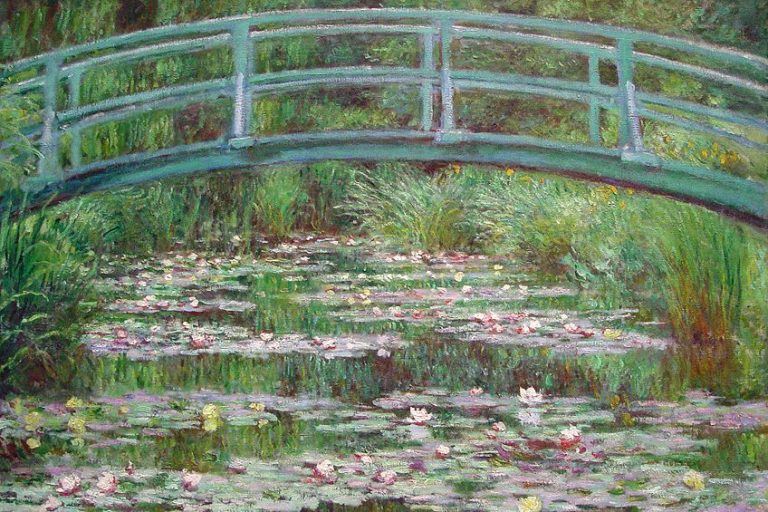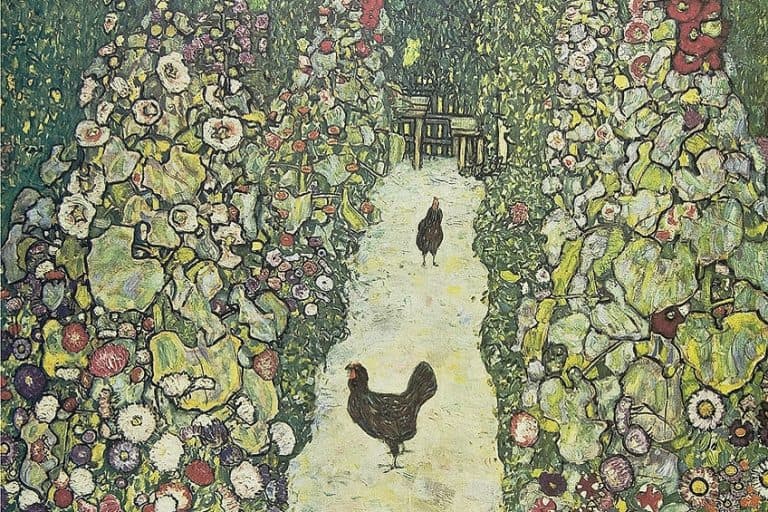“Still Life of Shoes” by Vincent van Gogh – A Unique Perspective
Still Life of Shoes, painted by Vincent van Gogh in 1886, is a compelling example of the artist’s ability to imbue everyday objects with profound emotional depth and symbolism. This work, created during his Paris period, showcases a pair of worn-out boots, reflecting Van Gogh’s fascination with the mundane and the marginalized. The painting’s earthy tones and textured brushwork evoke a sense of rugged endurance, suggesting the wear and tear of life itself. Through this seemingly simple subject, Van Gogh explores themes of labor, journey, and the passage of time, offering viewers a poignant glimpse into the lives of the working class. This still life is a testament to Van Gogh’s mastery in transforming ordinary items into powerful narratives that resonate with universal human experiences.
Key Takeaways
- Van Gogh’s Still Life of Shoes exemplifies his early work and exploration of traditional still life in Paris.
- The artwork allows a deeper understanding of Van Gogh’s personal reflections and artistic development.
- Housed at the Van Gogh Museum, the painting continues to be a point of study for its significance in Van Gogh’s oeuvre.
Historical Context
| Artist | Vincent van Gogh (1853 – 1890) |
| Date Created | 1886 |
| Medium | Oil on canvas |
| Genre | Still Life |
| Period/Movement | Post-Impressionism |
| Dimensions (cm) | 45.3 x 38.1 |
| Series/Versions | Multiple versions of shoe paintings |
| Where Is It Housed? | Van Gogh Museum, Amsterdam, the Netherlands |
| What It Is Worth | Estimated in the range of $10 million to $50 million, depending on the specific painting and its provenance |
Vincent van Gogh’s Still Life of Shoes is a notable piece created by the renowned Dutch painter in 1886. As a striking example of Van Gogh’s early work, it reflects the traditional theme of still life through the depiction of shoes. Painted during his time in Paris, this oil on canvas is characteristic of Van Gogh’s style, which would later evolve into the Post-Impressionism for which he is best known. The painting is part of the larger body of Van Gogh’s works that provides a window into his development as an artist and his experimentation with color and technique.

This specific still life is not merely a collection of footwear but is imbued with deeper meaning and reflects the artist’s reality at the time. It stands out in contrast to the vibrant landscapes and starry nights that most associate with Van Gogh, offering insight into the more subdued and contemplative aspects of his life and art.
The Still Life of Shoes has since found its home in the Van Gogh Museum in Amsterdam, attracting art lovers and critics alike to ponder its significance and place in the art world.
Series of Shoes Artworks
Van Gogh painted a series of shoe artworks during his time in Paris. These paintings depicted old, worn shoes, which some art historians suggest reflect the artist’s exploration of the working-class life. Each piece serves not only as a still life but as a narrative, telling a tale of toil and life’s journeys through the wear and creases of the shoes.
Cultural Significance
The paintings have a cultural significance in the context of the era. Van Gogh’s work came at a time when the Impressionists were more focused on capturing light and natural settings. In contrast, Van Gogh used the subject of shoes as a symbol to address themes of existence and hardship – presenting a grittier reality that diverged from the Impressionist’s tendencies. This bold focus on common objects introduced a form of realism that spoke to the human condition, making these works significant in the timeline of art history.

Analysis of Still Life of Shoes
This section explores the intricacies of Vincent van Gogh’s Still Life of Shoes , examining the subject, the painting’s deeper meanings, artistic methods, and its physical characteristics.
Subject Matter
Still Life of Shoes by Vincent van Gogh is a representation, as the title suggests, of a pair of worn shoes. The detail in the work highlights the texture and condition of the footwear, rendering them as the focal point of the composition.
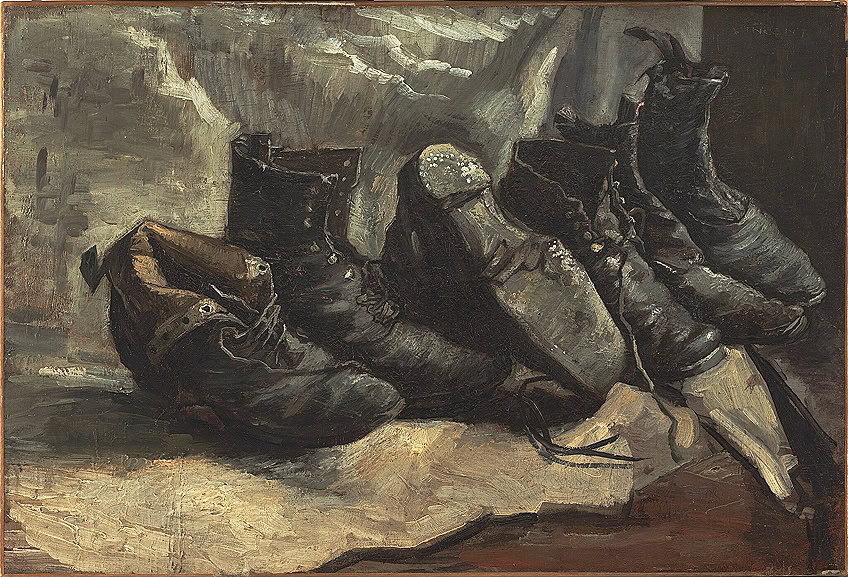
Symbolism and Interpretation
The painting is often interpreted as a symbol of the working class. The shoes are scuffed and well-worn, suggesting a life of labor and toil. Art historians suggest that they may represent the artist’s own journey or serve as a commentary on the nature of hard work.
Techniques and Composition
Van Gogh employed post-impressionist techniques, using thick, bold brushstrokes and a natural palette to portray the shoes realistically. The composition directs the viewer’s attention squarely to the weathered shoes, which are illuminated against a darker, nondescript background.
Technical Examination
Upon technical examination, Still Life of Shoes is an oil on canvas measuring 45.3 x 38.1 cm. Created during Van Gogh’s time in Paris, the brushwork and pigment use are consistent with his works from this period. The painting’s condition allows for a careful study of the impressionist’s technique.

Legacy of the Shoes Series
The Shoes series by Vincent van Gogh is considered a powerful exemplar of the artist’s preoccupation with the ordinary transformed into the extraordinary through expressive brushwork and color. Created between 1886 and 1888, these works showcase Van Gogh’s skill in bringing emotion and narrative into still life.
- Emotive quality: The series resonates with viewers through its emotive portrayal of worn footwear. They suggest the toil and journey of the common man.
- Artistic technique: Van Gogh’s use of color and texture enlivens mundane subjects, influencing both Impressionist and Post-Impressionist art movements.
Influences
- Impressionism: His use of light and color reflect his interaction with Parisian artists.
- Realism: The subject matter stays true to Van Gogh’s interest in depicting everyday life without idealization.
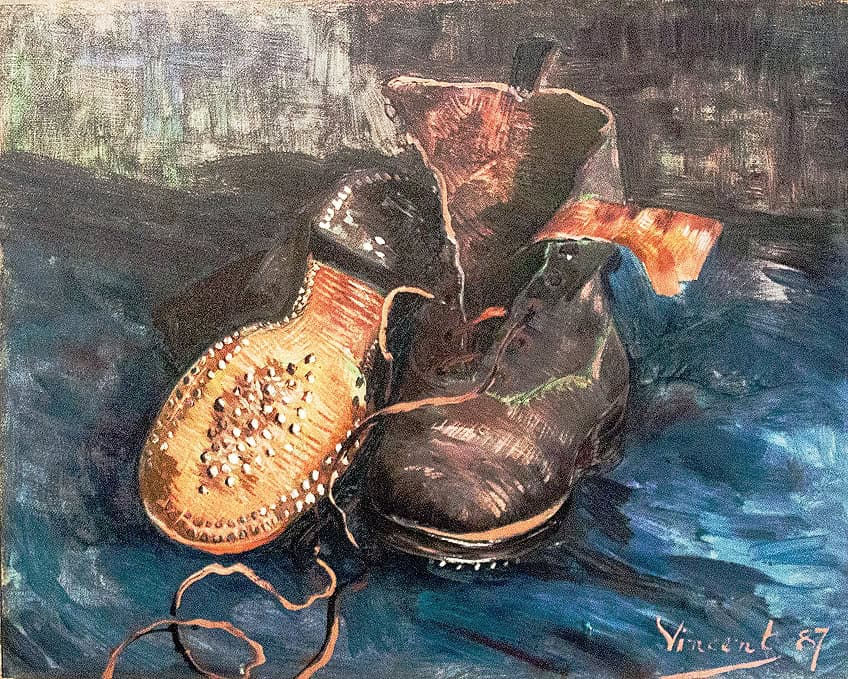
Cultural Impact
- Scholarly attention: The series has been extensively analyzed, symbolizing Van Gogh’s own life’s hardships and stability through the metaphor of shoes.
- Public fascination: These works continue to capture the public’s imagination, drawing crowds to museums and contributing to the enduring popularity of Van Gogh’s work.
Reproductions & Merchandise
- Van Gogh’s Shoes paintings are highly sought after as prints and digital downloads.
- Art enthusiasts purchase reproductions to bring a piece of Van Gogh’s genius into their own spaces.
- Merchandise based on the series, such as posters and canvas art, are ever-present in online marketplaces and exhibit gift shops.
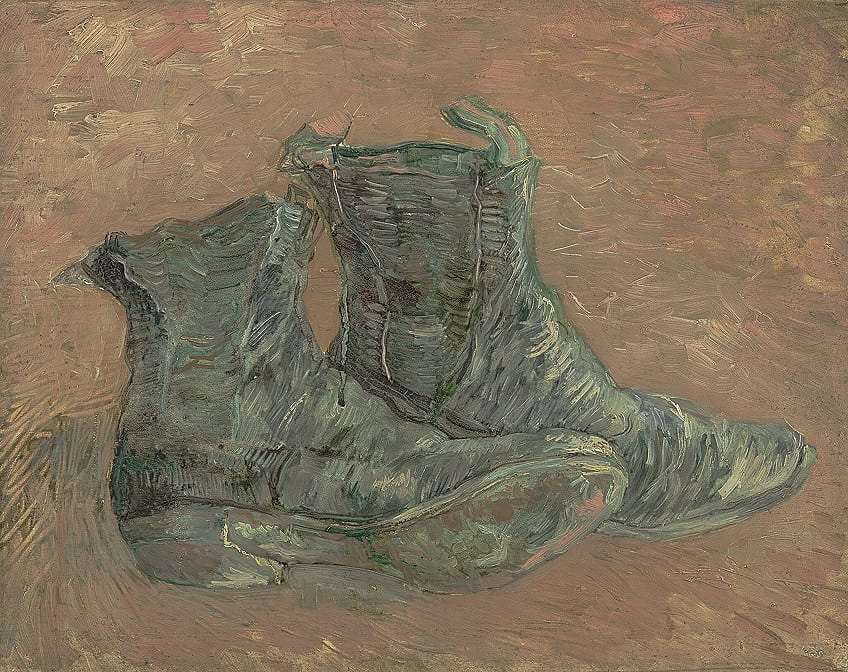
Still Life of Shoes stands as a remarkable testament to Vincent van Gogh’s genius in elevating the ordinary to the extraordinary. Through his masterful use of color, texture, and composition, Van Gogh transforms a pair of worn shoes into a poignant narrative on human endurance, labor, and the passage of time. This artwork not only reflects Van Gogh’s empathy for the working class but also his ability to find beauty and meaning in the most unassuming subjects. Still Life of Shoes continues to captivate audiences, reminding us of the artist’s profound connection to the world around him and his unparalleled talent for conveying the soul of his subjects.
Frequently Asked Questions
What Is the Significance Behind Van Gogh’s Painting of Shoes?
Van Gogh’s Still Life of Shoes represents more than just footwear; it’s an exploration of mundane life and the passage of time. The worn shoes can be seen as a symbol of the journey through life, capturing the essence of day-to-day existence.
How Does Still Life of Shoes Fit into Van Gogh’s Overall Body of Work?
Still Life of Shoes highlights Van Gogh’s interest in ordinary subjects and his ability to evoke emotion through them. It aligns with his larger body of work by showcasing his dedication to highlighting the beauty in what many would consider commonplace or overlooked.
Which Artistic Techniques Did Van Gogh Employ in His Depiction of Shoes?
In Still Life of Shoes, Van Gogh utilized his signature impasto technique, applying paint thickly to create texture. His use of earthy, muted tones conveys the well-worn aspect of the shoes, imbuing the inanimate objects with a sense of their owner’s presence.
How Have Art Historians Interpreted Van Gogh’s Still Life of Shoes?
Art historians often interpret Van Gogh’s Still Life of Shoes as a contemplation on labor and life. The emphasis on the ordinary object allows the viewer to infer stories about the shoes’ owner, thereby making a personal connection to the universal experience of hard work and the passage of time.
Isabella studied at the University of Cape Town in South Africa and graduated with a Bachelor of Arts majoring in English Literature & Language and Psychology. Throughout her undergraduate years, she took Art History as an additional subject and absolutely loved it. Building on from her art history knowledge that began in high school, art has always been a particular area of fascination for her. From learning about artworks previously unknown to her, or sharpening her existing understanding of specific works, the ability to continue learning within this interesting sphere excites her greatly.
Her focal points of interest in art history encompass profiling specific artists and art movements, as it is these areas where she is able to really dig deep into the rich narrative of the art world. Additionally, she particularly enjoys exploring the different artistic styles of the 20th century, as well as the important impact that female artists have had on the development of art history.
Learn more about Isabella Meyer and the Art in Context Team.
Cite this Article
Isabella, Meyer, ““Still Life of Shoes” by Vincent van Gogh – A Unique Perspective.” Art in Context. May 24, 2024. URL: https://artincontext.org/still-life-of-shoes-by-vincent-van-gogh/
Meyer, I. (2024, 24 May). “Still Life of Shoes” by Vincent van Gogh – A Unique Perspective. Art in Context. https://artincontext.org/still-life-of-shoes-by-vincent-van-gogh/
Meyer, Isabella. ““Still Life of Shoes” by Vincent van Gogh – A Unique Perspective.” Art in Context, May 24, 2024. https://artincontext.org/still-life-of-shoes-by-vincent-van-gogh/.






